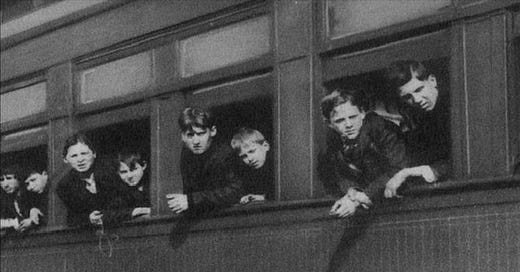The Orphan Trains, a one-hour episode of American Experience on PBS, aired in late November 1995. It’s a good Thanksgiving broadcast. The WGBH-produced program, written and co-produced by Edward Gray for his company, introduced by historian and author David McCullough and narrated by Stacy Keach, unfolds a powerful, moving and little known tale of the Children’s Aid Society program to place city orphans in country, rural or farming families. It’s engrossing to say the least.
According to the show producers:
In the mid-1800s, there were 10,000 homeless children in the streets of New York. Called "street Arabs," these children of impoverished immigrants slept in stairwells, stables or on the docks. Between 1854 and 1929, the Children's Aid Society in New York and other [private] East Coast charities sent more than 150,000 orphaned and neglected children by train to farming communities, to begin new lives in foster families. There were successes and failures, and this film recounts example…
Keep reading with a 7-day free trial
Subscribe to Autonomia to keep reading this post and get 7 days of free access to the full post archives.




